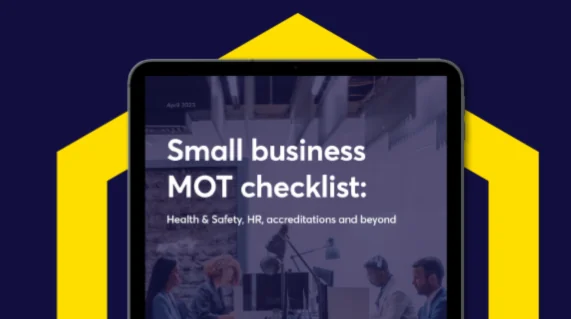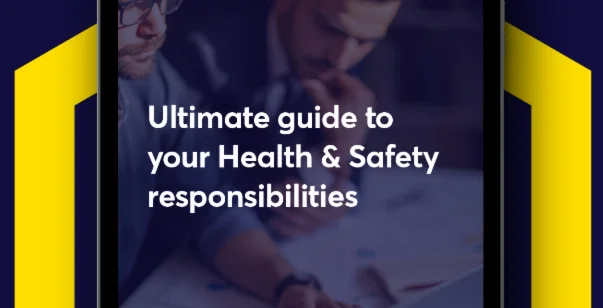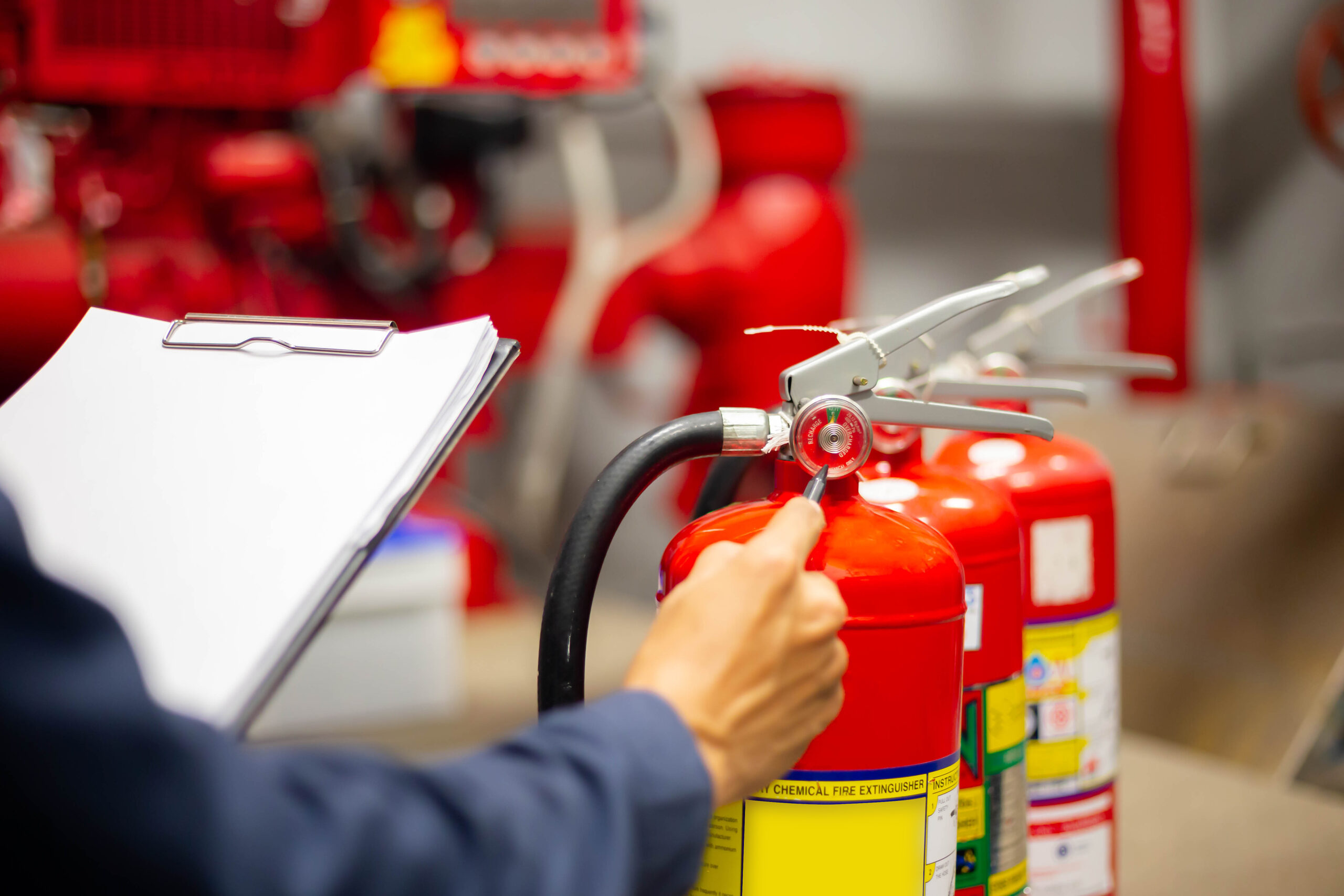Writing a risk assessment properly is a fundamental part of making sure your workplace is safe and compliant with Health & Safety laws and regulations. In this blog, we’ll be walking you through the process of creating an effective risk assessment – from understanding exactly what a risk assessment is, to the practical steps you can take when writing your assessment. Whether you’re a seasoned Health & Safety professional or just getting started, we’re here to help you navigate the world of risk assessments with confidence.
The basics of a risk assessment
Before we delve into the nitty-gritty details, let’s start with the basics. A risk assessment is a systematic process of evaluating potential risks in a workplace, identifying who might be harmed, and implementing measures to minimise or eliminate those risks. A risk assessment’s primary purpose is to make sure employees, visitors and anyone else affected by work activities are kept safe while on the premises.
It can be easy to dismiss a risk assessment as a box-ticking exercise, but an attitude of apathy can lead to more serious consequences if the risk assessment process is ignored. Although it may seem like more paperwork and admin, the fact remains that risk assessment plays a crucial role in protecting the safety of others and meeting compliance standards.
Why risk assessments matter
It’s important to understand why risk assessments matter. Not only are they a legal requirement to protect people, but they also offer the following benefits for your business:
- Stay compliant with legislation and provide evidence when inspected
- Identify and manage risks to minimise workplace incidents and injuries
- Use the findings of risk assessment to take action and save costly outlays
- Build and maintain a culture of safety and awareness across your business
Compliance
According to the Management of Health and Safety at Work Regulations 1999, employers have a duty to ensure they carry out the following as a minimum requirement:
- Identify what could cause injury or illness in your business – i.e. hazards, risks
- Decide how likely it is that someone could be harmed and how seriously
- Take action to eliminate the hazard, or control the risk if that’s not possible
If your business has 5 or more employees, you’re legally required to write your risk assessment down. But it’s best practice to write it down anyway because if the HSE come knocking, you’ll need solid evidence that you’ve carried out risk assessments. Non-compliance can lead to fines, legal trouble and damage to your company’s reputation.
Reduce incidents
Every workplace environment has hazards that can cause injuries or ill health. Identifying and mitigating risks can significantly reduce the likelihood of workplace accidents and injuries – and they can also save lives. Some hazards pose bigger risks than short-term injuries and can cause life-threatening accidents and health conditions.
Save costs
Bad risk management can cost a lot of money and put financial strain on a business – which can be especially difficult for small businesses. For example, if employees need to take time off due to work-related injuries or ill health, you might need to cover sick pay and the cost of cover. Legal fees can also come into play – affected people might claim compensation and the HSE might issue fines if you’re in breach of Health & Safety legislation.
Increase employee engagement
Risk assessments need to be communicated across all levels of a business and should be consulted in the risk assessment process. This fosters a culture of safety in your business and empowers staff to take responsibility for their own wellbeing, and the wellbeing of their colleagues.
What to include in a risk assessment
When conducting a risk assessment, you’ll need to make a few key considerations to make sure you’re doing it right. These areas include:
- Workplace hazards: identify and document all potential hazards in your workplace, whether they’re physical, chemical, ergonomic, or psychosocial.
- Risk levels: evaluate the risks associated with each identified hazard and categorise them according to severity, likelihood, and potential harm.
- Who might be at risk: determine who might be harmed by these hazards. This includes employees, contractors, visitors, and anyone else who may enter the premises
- Preventive measures: identify and implement precautionary measures to control and mitigate the identified risks. These measures could include engineering controls, administrative procedures, and personal protective equipment (PPE)
- Emergency procedures: develop and communicate emergency procedures, including evacuation plans and first-aid protocols, in case a risk materialises
How to write a risk assessment
Compiling the relevant information is one thing, but documenting your findings correctly requires a strict approach to ensure you meet compliance requirements. The HSE’s five-step method provides a structured approach to creating a risk assessment. Let’s break down each step and see how you can use them to develop an effective risk assessment for your workplace.
Identify hazards
Systematically identify all potential hazards in your workplace. Walk around, observe, and consult with employees to make sure you don’t miss any hazards, no matter how minor they may seem. Record the hazards you identify and clearly outline the approach and necessary measures for each individual hazard in your write-up.
Determine who might be harmed and how
Identify who could be at risk from each hazard and consider how they might be harmed. This includes employees, contractors, and visitors. Understanding the potential consequences of each hazard is crucial.
Evaluate risks and identify precautionary measures
Assess the risks associated with each hazard, considering their severity and likelihood. Then, determine the right precautionary measures to reduce or eliminate these risks. This could involve implementing safety protocols, providing training, or introducing safety equipment.
Record findings and implement safety measures
Document your findings in a clear and concise manner. Include details on the identified hazards, risks, and the measures you plan to implement. Make this information accessible to all relevant parties, and ensure that safety measures are put into practice.
Review your risk assessment
A risk assessment isn’t a one-off task. You’ll need to periodically review and update it to reflect changes in your workplace, equipment, or processes. This ensures that your safety measures remain effective over time.
Create your risk assessments with support from HS Direct
Writing a risk assessment may seem like a daunting task, but you don’t have to do it alone. HS Direct offers comprehensive support to simplify the process. Our services include a range of bespoke templates, guidance, and expert advice to help you create a robust risk assessment that ticks all the boxes for compliance.
Take a look at our wide range of risk assessment templates for every industry, our blank risk assessment template if you want to tailor your risk assessments to your business, or if you need a starting point, just download our free template.
Or, if you want to speak to a member of the team about risk assessments or your business needs, just call 0114 244 4461 or visit our contact page and we’ll get back to you!
For a more in-depth look at risk assessments and the role they play, our guide to risk assessments covers everything you need to know.








